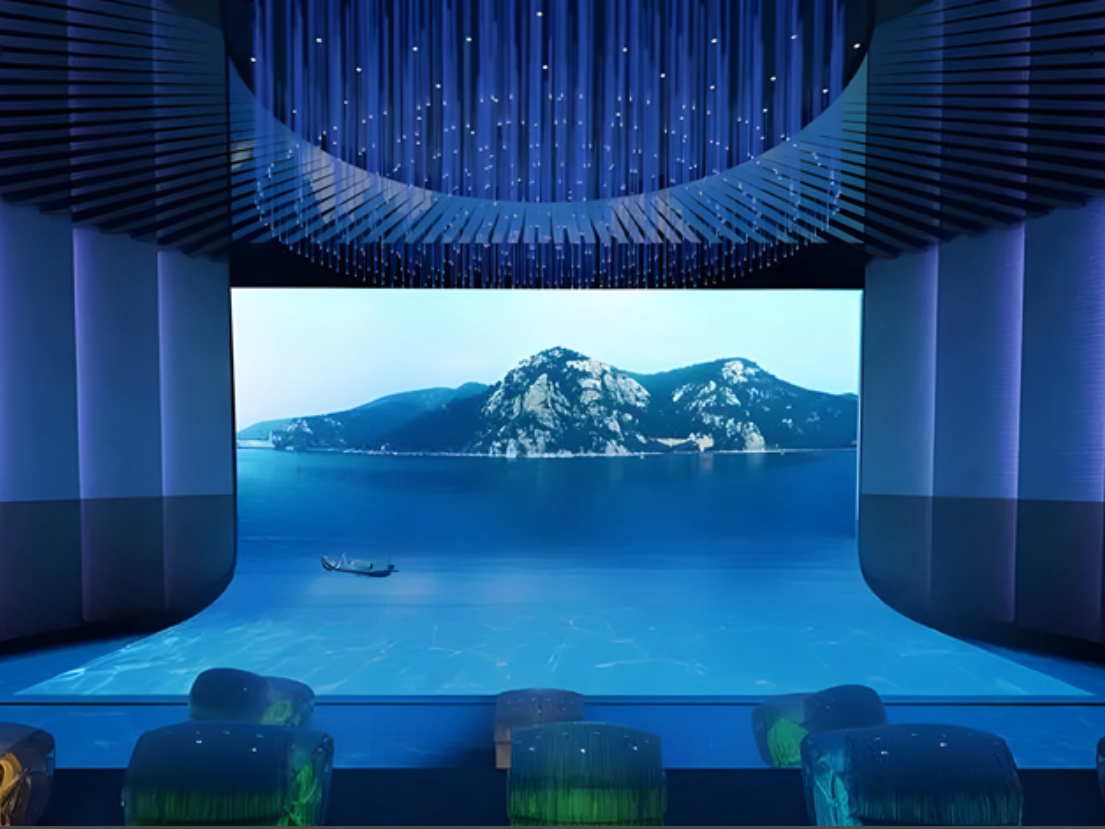2023-09-09 1,147
Immersive projection is a form of holographic projection, which mainly includes arc screen projection, ring screen projection, canopy projection and L-screen projection.
In practice, the most common immersive projection is L-screen projection, followed by arc screen and canopy projection, while ring screen can only be seen in specific occasions.
L-Screen projection is made up of walls and floors that are fused by multiple gobo projectors to create a seamless and complete picture.
A perfect L-Screen projection requires at least two projection surfaces, and some projects even require five, including the front, the floor, and the left and right sides. The more projected surfaces, the more immersive the experience will be for the audience.
Holographic canopy projection works on the same principle as L-screen projection but uses the ceiling above the audience's head to give a stunning visual experience.
Combined with specific materials, such as a starry night scene, and stereo sound effects, it can create an immersive viewing environment.
Arc screen and ring screen projection is made up of multiple arc screens and gets its name from the shape of the projection surface. An arc screen presents a partial curve, while a ring screen is a complete 360-degree ring.
Surround screen projection surrounds the viewer in the center, displaying an oversized picture to satisfy the viewer's need for vision. This, coupled with the integration of surround sound effects and movie content, creates an immersive audio-visual feast.
Overall, the classification of immersive projection is based on the projection position and the properties of the display surface, and different classifications apply to different scenarios. The specific choice of which projection method needs to be decided according to the project requirements.
